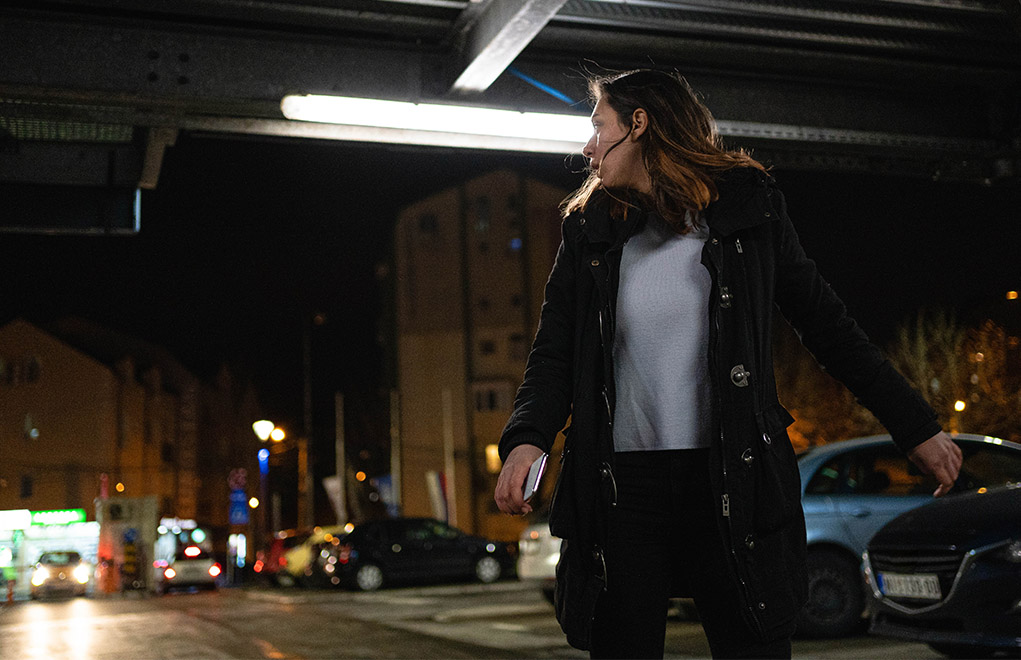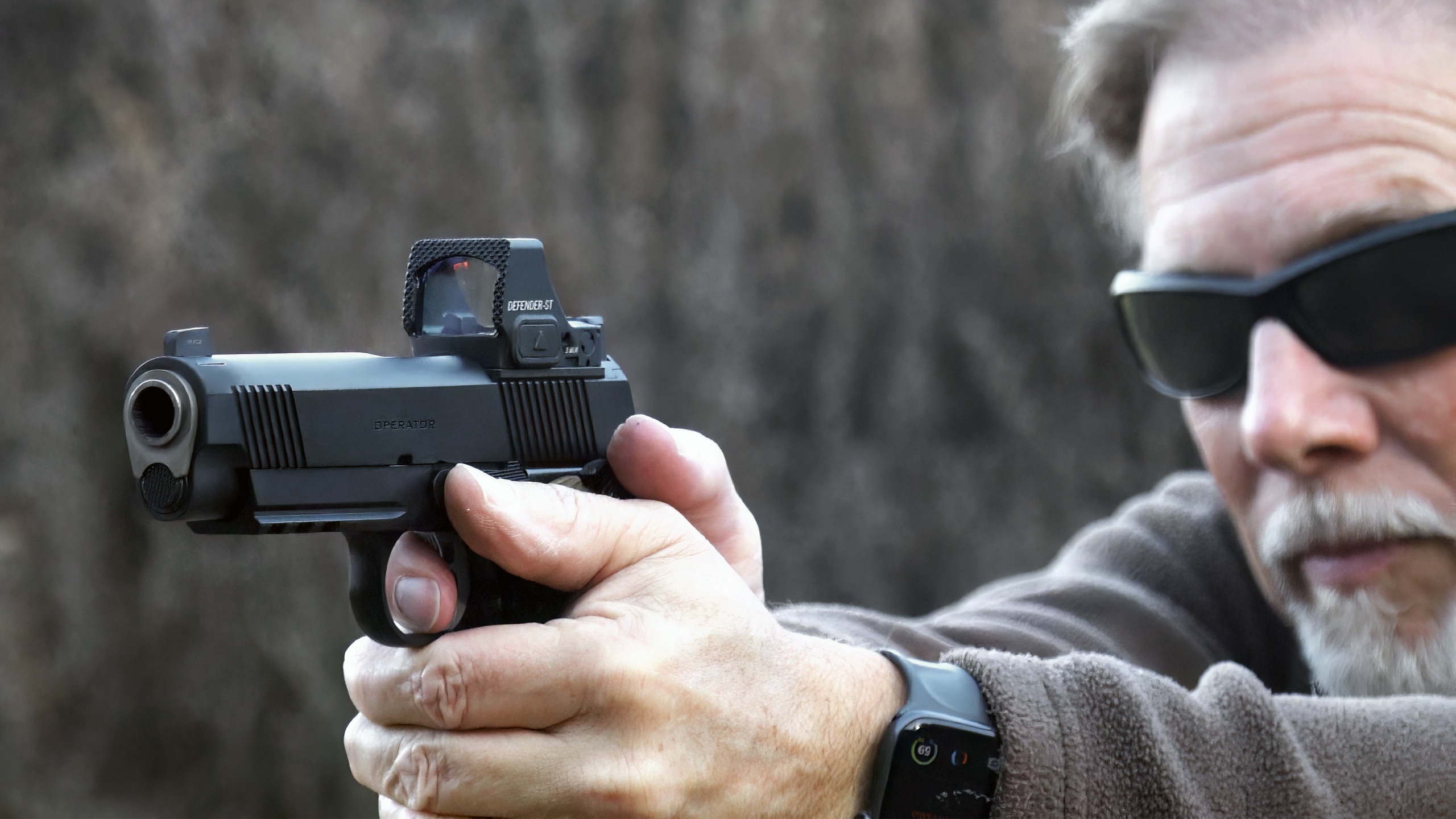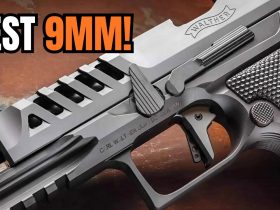Maximizing Your CCW Efforts With the Right Training Targets
Amid all the choices there are in shooting, selecting targets may seem like one of the simpler decisions. If you want a training target for hobby shooting or the simple fun of it, almost any target will do.
However, if your goal is more serious practice, the quality and versatility of a target will greatly determine its usefulness. Some people might buy any target that meets their budget or only go for the latest fad target without any consideration of if it’ll fit their needs.
There are perhaps thousands of targets to choose from — simple shapes and colors, scoring targets like the venerable B-8 or B-27, and more realistic targets like the popular VTAC anatomy target or the Rubber Dummies 3D silhouette target.
When you take a hard look at what you want targets to do for you, not just any target will do, and it’s hard to find one target that does everything. Like the careful consideration we put into our choice of firearm, optic, weapon-mounted lights, slings, and a myriad of other gear, targets deserve the exact same respect.
As a self-defense instructor and shooter, I tend to categorize my targets and use them accordingly: skill isolation, round placement, familiarization/practice, and realism. Some targets can overlap into all categories, others exist only in one of them.
I’d recommend to any shooter, new to experienced, to have a few types of targets on hand and use targets that best fit what they happen to be working on.
ISOLATION
Isolation is the practice of the fundamentals; few targets are better than a bull’s-eye style here. The NRA B-8 and similar targets have experienced a resurgence, mostly with handguns although they’re just as useful with rifles. A popular drill for handguns is to post the B-8 at 25 yards and shoot 10 rounds, starting from the holster, with a time limit of 20 seconds.
Not only does this simple drill reinforce all of the common fundamentals of shooting, it creates an easy metric that makes it easy to see improvement. It’s perhaps one of the best ways to evaluate the core fundamentals; grip, trigger control, sight picture (or reticle placement for RDS), recoil management, and follow-through, all put to the test in a short string of rounds.
A time, distance, and accuracy standard is vitally important for skill maintenance, and once you’re ready, a little public competition or bragging rights. This drill helps shooters maximize their use of time, as 20 seconds seems like plenty until you start working on score improvement.
If you can shoot into the 90s on a B-8 in 20 seconds, you’re doing very well. For the rifle, the time limit and round count are the same, only the drill is shot starting from the low-ready, and it’s shot at 50 yards. If 50 yards isn’t available, shoot it at 25 yards in a mere 10 seconds.
Of course, there are other targets that can help in this category; the intimidating Dot Torture target is one that can be found online and printed for free. Most retailers carry isolation targets, ranging from colored shapes or playing cards to variations on the Dot Torture target.
For me, using a simple bull’s-eye helps show the deviation and consistency in my technique. I also created a Human B-8 target I use in classes with the same distance, round count, and time limit, except the bull’s-eye is replaced with an anatomic head.


SELF-DEFENSE TRAINING
If I’m working on other techniques, or more self-defense focused shooting, I prefer to work on a contrast target that offers some approximate detail of critical regions of the human body.
As already mentioned, the VTAC is one such target, as is the UTC Anatomy target, or many others that can be found. The unfortunate issue with any of these targets, or any 2D target that attempts to replicate something that is 3D, is that real life is in 3D and 2D targets aren’t.
You can’t take a three-dimensional object and make it two-dimensional without some distortion occurring. For an anatomical or skeletal representation target, there’s some distortion present. This usually means that an organ or structure is represented as either too large or too small. Another issue with the realistic attempts made with photographic 2D targets, if you’re a stickler for realism like I am, is that a target cannot replicate three dimensions with two.
Photographic targets are excellent for shoot/don’t shoot training, positive identification drills, and similar exercises, but they do a poor job of preparing self-defense minded shooters for the reality of confronting an actual three-dimensional threat. This doesn’t mean these targets don’t have a place, because they most certainly do.

REALISM
When practicing a step above basic fundamentals, working techniques, or running proficiency drills at various distances, I prefer to use simplified targets that replicate critical regions of the body.
The UTC Anatomy target is perhaps my favorite. However, the VTAC is just as useful. If you want to reinforce ideal sight picture, presentation, and learn to aim for the correct parts of a threat, these targets are excellent training aids to suit the purpose.
If you’re restricted, like so many shooters, to using a tightly controlled indoor range that limits movement, drawing from the holster, or even how many rounds you’re allowed to fire per second, these types of targets are perhaps the best option for realism.

ISSUE & ANSWERS
Live-fire training, by its very nature, complicates realism because of the need for safety — it’s common practice to simply accept the unrealistic nature of targets and training aids except for attempting to make targets look more realistic.
For self-defense, no target, no matter how specific its anatomy or the quality of its photograph overlay, is going to approach an acceptable level of realism. For that, an actual three-dimensional target is needed.
Historically, 3D targets have been rare, sometimes because of a lack of imagination on the trainer’s part, or because 3D targets are more expensive than flat paper. On the market today, there are only a few actual 3D target options. One of the most present is the Rubber Dummy. However, it’s not a true 3D target; more of a front-and-sides presentation.
Though it’s durable, its weight makes it cumbersome, and for those using indoor ranges, it’s a non-starter. The most inexpensive and versatile 3D target on the market today is the Tac Drop UTC target.
Comprised of an IDPA/IPSC profile silhouette with reduced size scoring zones that are usable on its own, the Tac Drop UTC has an optional folding front section that offers a 3D representation of a torso and head.
While boxy in shape, it approximates the human form well and is a versatile target for its simplicity. It’s able to be engaged from any angle and allows shooters the ability to judge and practice the best placement for a center mass shot when working from the flank or other angle.
An optional accessory kit is available, which includes arms used to create shoot/no-shoot targets by arming them with knives or guns. Also, the Tac Drop is made hit reactive by placing inflated balloons in the chest, head, or both and then hung from a line so that a proper hit or hits are needed to drop the target.
In the 3D configuration, clothes placed on the target increase realism so that shooters cannot track their hits, reinforcing proper point of aim from all angles. When paired with even the most basic instruction on human anatomy, the Tac Drop greatly enhances round placement skill practice in the most realistic way that live-fire training currently allows.

LOOSE ROUNDS
If you’re interested in maximizing practice time and have already spent years working on more traditional 2D targets, the experience of a 3D target will be both humbling and educational; practicing for the fact that threats don’t always give ideal, squared presentations.
No matter what your focus is on any given range day, targets need to be part of your plan. Our foundational metrics are time, distance, and accuracy. The target not only records your accuracy, it helps you improve it.
The particular skill you’re working on should determine the target you use. Choose targets that provide the most versatility to help manage expectations and show the path to improvement. If you’re a self-defense focused shooter, at least one target in your collection should provide the most realism possible to hone the fundamentals you develop on the others.
We live in a 3D world, so that should be the ultimate practice goal. Keep it simple and practical, and when you’re ready, make it as realistic as you safely can.

NEXT STEP: Download Your Free Target Pack from RECOIL
For years, RECOIL magazine has treated its readers to a full-size (sometimes full color!) shooting target tucked into each big issue. Now we’ve compiled over 50 of our most popular targets into this one digital PDF download. From handgun drills to AR-15 practice, these 50+ targets have you covered. Print off as many as you like (ammo not included).
Get your pack of 50 Print-at-Home targets when you subscribe to the RECOIL email newsletter. We’ll send you weekly updates on guns, gear, industry news, and special offers from leading manufacturers – your guide to the firearms lifestyle.
You want this. Trust Us.
Read the full article here


















Leave a Reply